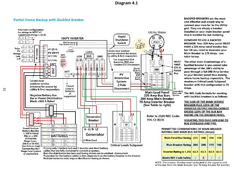So traditionally we've had grid tie inverters that connect to the main panel and push all the output to loads or the grid during the day,
Or
Battery backup systems where you have a protected loads panel that's supported by the battery inverter, usually for grid down power and because most inverters usually cannot support a whole house.
So with net metering going away and battery storage coming into it's own :
Are there hybrid inverters that can very simply tie into the main panel, like a grid tie inverter, supply/support loads from pv and battery during the day, and continue to support loads at night from battery?
So, say you have an inverter that can output 10kw- when loads are less than 10kw, the inverter provides all the power, but if loads are more than 10kw, the inverter supplies is 10kw and the grid supplies the rest?
I feel like this would be the simplest most affordable way to do pv and battery systems for people who have a stable grid
Or
Battery backup systems where you have a protected loads panel that's supported by the battery inverter, usually for grid down power and because most inverters usually cannot support a whole house.
So with net metering going away and battery storage coming into it's own :
Are there hybrid inverters that can very simply tie into the main panel, like a grid tie inverter, supply/support loads from pv and battery during the day, and continue to support loads at night from battery?
So, say you have an inverter that can output 10kw- when loads are less than 10kw, the inverter provides all the power, but if loads are more than 10kw, the inverter supplies is 10kw and the grid supplies the rest?
I feel like this would be the simplest most affordable way to do pv and battery systems for people who have a stable grid



